- Abe
- Rug & Carpet
- 3761 views
- 0 comments
The Persian rugs are still the most poetic art objects that humanity has ever created. Considered a timeless art by many, Persian rugs are distinguished by aesthetic patterns, intense colors, and breathtaking craftsmanship from designers over the years.
Although, the slick design most beloved by all is called the Shah Abbasi. This design wins the hearts of all who see it with its magnificent and flawless sequencing of colors. Here, we are going to examine the history, features, symbols, and waving of Shah Abbasi rug design which is a development from the designs of the Safavid dynasty.
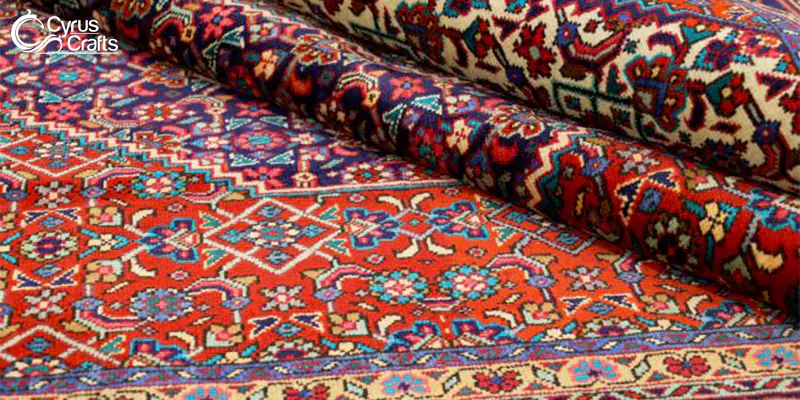
A Glance at All of the Persian Rugs Motifs
With the Shah Abbasi motif itself in mind, first, it is better to grasp something around the common Persian handmade rug motifs. Persian carpets have a variety of motifs, which tell different stories, but also make them literally and spiritually beautiful.
- Boteh (Paisley): An example of a symbol is Boteh which is the term referred to as the “paisley” motif. The Boteh is unique in having a droplet shape that is halfway between a star and a tree form, more often than not, repeated to create a beautiful pattern.
- Gul: The motif that is frequently displayed is the Gul which has a large flower in the center and beautiful small flowers shown around it.
- Herati: The Herati motif rugs (which can be seen in a lot of Khorasan rugs) have a central medallion that is diamond-shaped, and fish or floral elements surround it while the other diameter medallions are enclosed by a green frame that has leafy elements within.
- Mina-Khani: The Mina-Khani motif includes the variegated composition of the parallel floral forms compacted in a geometric figure.
- Rosette: This is a name suggestive of this pattern in which a rosebud decorates the center area and in the next outer circle of the rug, there is a ring of flowers, and this motif is vastly used by Tabriz rug weavers.
- Shah Abbasi: The name for the motif comes from the 16th century rule of Shah Abbas who was the ruler of the Safavid dynasty.
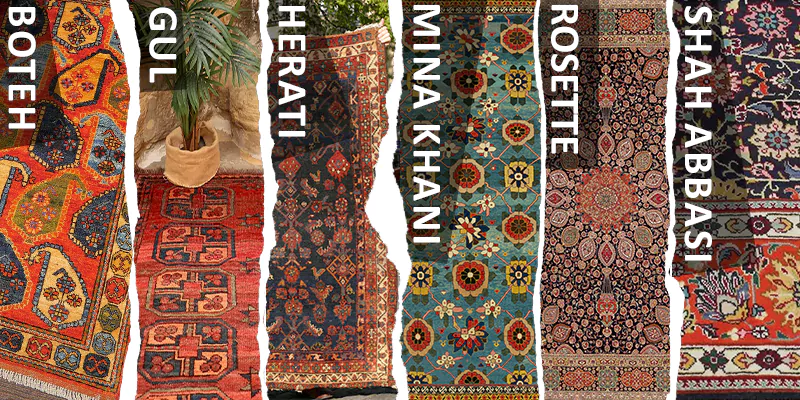
This pattern is appreciated worldwide for its highly detailed and delicate flower designs, mostly of roses and another kind of flowers, as well as leaves and some designs that are made by vines. The Shah Abbasi design is admitted as one of the rare and great masterpieces in the field of Persian rug and carpet making.
Cyrus Crafts; Luxury & Unique Products
The History of Shah Abbasi Motif
The Shah Abbasi design came into being in the late 16th century when Shah Abbas I was the public order of affairs. He was a Royal Tradesman who played a notable deed in the Persian carpet history. He even promoted the production of high-quality wool and silk rugs that could be worn for practical purposes as well as decoration.
During this time period, Persian rug weavers started to introduce highly detailed flowery patterns in their carpets, resulting in the beginning of the Shah Abbasi design. This trend did not take long to make it into the fashionable elite that started to put it as a symbol of wealth and refinement. Throughout the years, the Shah Abbasi motif which was supposed to be like the one used by previous designers underwent evolution with weavers adding their own creative hands to it, as they were adding some variations but still trying to keep the original pattern as it is.
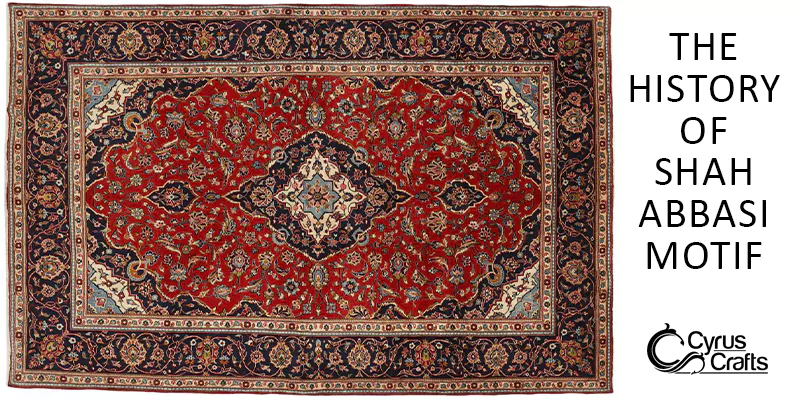
The Characteristics of Shah Abbasi Rug Design
The Shah Abbasi motif has a reputation for using floral patterns. The themes rather often consist of rose plants, tulips, carnations, and other flowers together with leaves and greenery.
These designs are so beautiful that they are skilled to harmonize with the area rug causing the mesmerized effect. The hues of the Shah Abbasi rug are commonly lively and express a great harmony except for just a few colors might be added for finishing touches they seem so amazing when they are put together.
It goes without saying that a few main characteristics can be distinguished in the shah abbasi rug in the first place, among which a high knot density is the most important. Persian rugs are packed full of its knotting art, and this Shah Abbasi one is just like any other Persian rug for it will have an impressive number of knots per square inch. It serves the function of both enhancing the rug's lifespan and as a finishing touch to its luxurious appearance.
Beyond the decoration of the Shah Abbasi design, the addition of the natural dyes also made an impact. Traditional Persian rug and kilim weavers, who used natural plant, insect and mineral products for the making of their dyes, relied on creativity and meticulousness to create beautiful patterns and brilliant colors aside from being eco-friendly and sustainable, these organic dyes produce stunning vibrant colors while improvising over a period and unfolding the aesthetics of the rug.
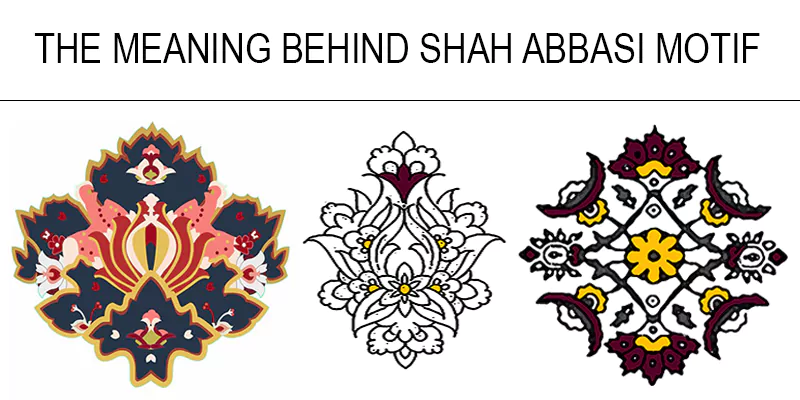
The Symbolism and Meaning Behind Shah Abbasi Motif
So, this Shah Abbasi pattern is one of the other Persian rug motifs that means many spiritual and more exotic things. The work of art with its fine patterns is the manifestation of nature's beauty, and roses with their specific meaning for love and beauty are also depicted. The use of leaves and vines to achieve this can be caused by the life and vitality of a design and the pattern of overall harmony and balance.
In Persian culture, carpets are placed at the highest level, and in most cases, they represent wealth, status, and hospitality bringers. The Shah Abbasi pattern adapted to the general culture of luxury minting, richness, and elegance, and is regarded as an indicator of social status. Owning a Shah Abbasi rug does not give you only a glimpse into the life of art and one's character but also a testimony to the rich cultural heritage of Persia.
The Weaving Process of Shah Abbasi Rugs
The process commences with the nomination of best-quality wool or silk, on which the base is built. Sheep or silkworm is a next year's complication and is later dyed with natural ingredients to reach the target colors.
Having done that, the weaver erects the loom, which is a frame intended for having the warp threads held together. The weaver is now threading the weft yarns around the warp threads according to the traditional Shah Abbasi carpet designs. This step is performed by making one row until the final part of the rug is ready.
As the weaving process goes on, the maker needs to pay attention to ensure the knots are tight and evenly spaced to have uniform and rug robustness. Upon completion, the rug comes out of the loom (quti) and goes through a finishing process (varkia) in which it is trimmed, washed, stretched, and laid flat.
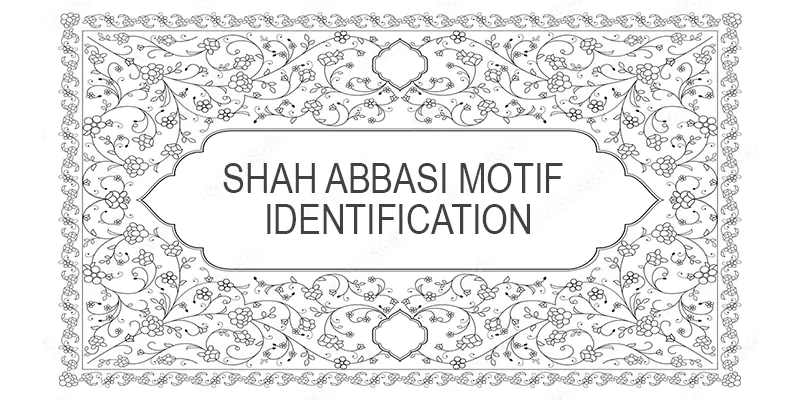
How to Identify a Genuine Shah Abbasi Motif Rug
With the popularity of Persian rugs, it's important to be able to identify a genuine Shah Abbasi rug from imitations or replicas. Here are a few key factors to look for:
- Knot Density: A genuine Shah Abbasi rug will have a high knot density, typically ranging from 200 to 800 knots per square inch. The higher the knot count, the more intricate and detailed the design will be.
- Material: Shah Abbasi rugs are traditionally made from high-quality wool or silk. The wool should be soft, while the silk should have a smooth and luxurious feel.
- Design: The Shah Abbasi motif is characterized by its intricate floral patterns. Look for delicate roses, tulips, and other flowers, along with leaves and vines, woven into the rug's design.
- Natural Dyes: Traditional Persian rugs, including Shah Abbasi rugs, are dyed using natural materials. Look for rich and vibrant colors that have a subtle variation, indicating the use of natural dyes.
Craftsmanship: Examine the rug for the overall quality of craftsmanship. A genuine Shah Abbasi rug will have tightly packed knots, even weaving, and a smooth and symmetrical design.
Famous Examples of Shah Abbasi Rugs
Over the centuries, many exquisite Shah Abbasi rugs have been created, each showcasing the masterful craftsmanship and artistic vision of Persian rug weavers. Here are a few famous examples:
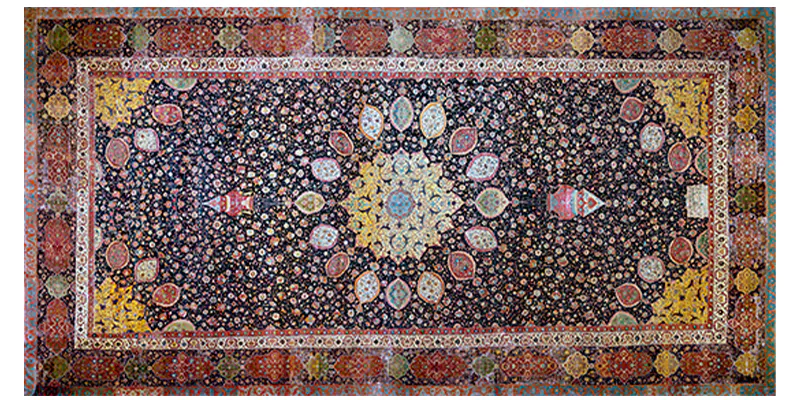
The Ardabil Carpet: Considered one of the finest Persian rugs ever created, the Ardabil Carpet features the Shah Abbasi motif in its intricate design. It is currently housed in the Victoria and Albert Museum in London.
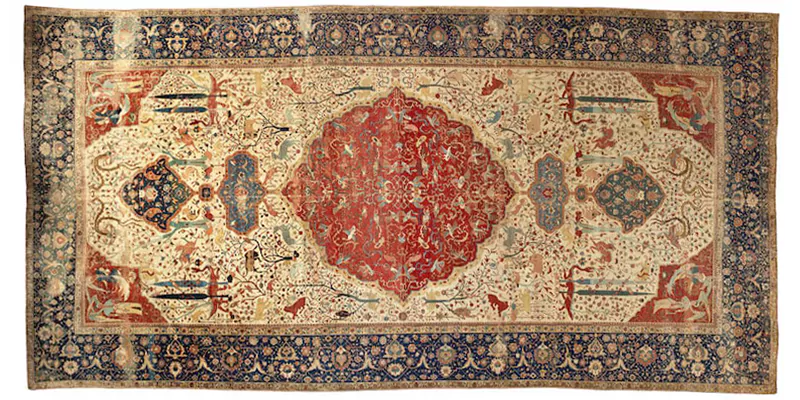
The Coronation Carpet: This magnificent rug was commissioned for the coronation of King Edward VII in 1902. It is adorned with the Shah Abbasi motif, along with other Persian rug motifs, and is now part of the Royal Collection Trust.
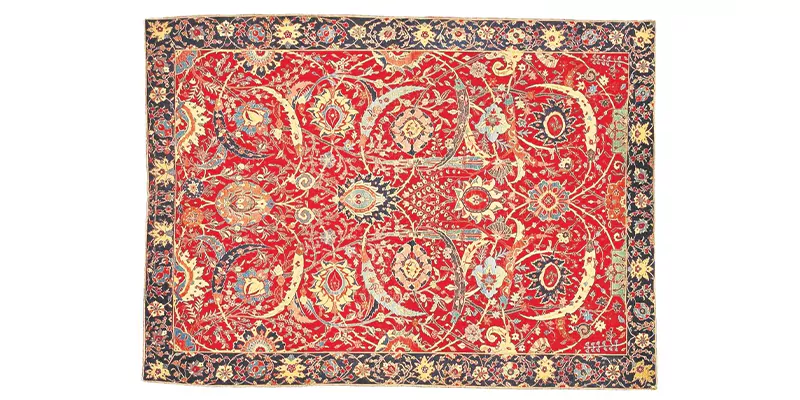
The Clark Sickle-Leaf Carpet: This stunning Shah Abbasi vintage rug is one of the most famous examples of its kind. It is named after its previous owner, William A. Clark, and is now in the collection of the Corcoran Gallery of Art in Washington, D.C.
The Shah Abbasi rug design is all about Persian artistry to prove spiritual progress as well. It is a true interpretation of nature with its complexly depicted floral patterns, vivid colors, and the immaculate precision of work. Whether large or small the space where the Shah Abbasi rug is displayed will add an atrocity of elegance to your room. Shah Abbasi rugs can be appreciated from various angles. Their history, fabric, symbol, and pattern are all suitable subjects that can improve one’s understanding of this art.
CyrusCrafts Chain Stores: North America
CyrusCrafts NA is seriously pleased to show you the evolution of Persian rug chain stores in North America. The mission has always been to bring beauty and craftsmanship of the most exquisite Persian carpet to homes and offices and we are glad we have done this in several key locations.
CyrusCrafts Toronto, Ontario Online Rug Store
Since we opened our store a couple of years ago, people who are interested in rugs and the arts in Toronto, Ontario have come to know us well.
From the elegant round rugs placed at the doorsteps of classy houses to the bright and stunning area rugs placed in the living room, we offer an enormous stock of Persian rugs in Toronto and vintage rugs in Toronto that match every individual preference.
CyrusCrafts Ottawa, Ontario Online Rug Store
To increase our market share, we established a store in the largely populated nation’s capital city of Ottawa in Ontario. It has grown to be a favorite for store designers who want to source great rugs that will enhance homes and offices. The Ottawa store also presents a large collection of area rugs, Persian rugs, Kilim rugs, and other fine items purchased from the world’s most prestigious rug-making regions.
The kind of service that has been synonymous with our Ottawa store includes the warm and personal attention given to the customers.








Comments (0)